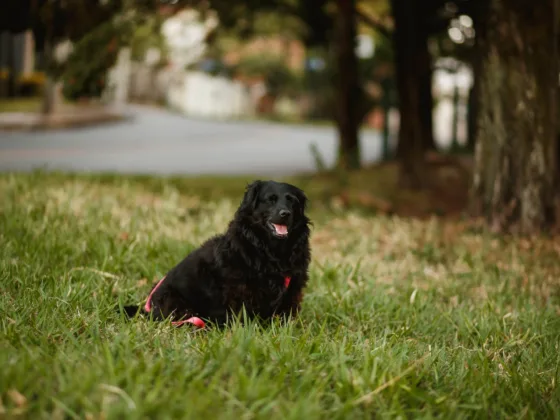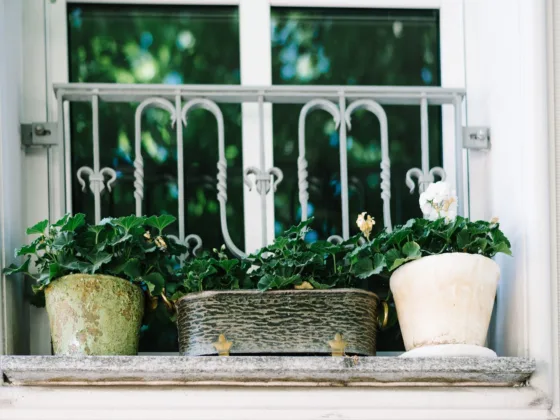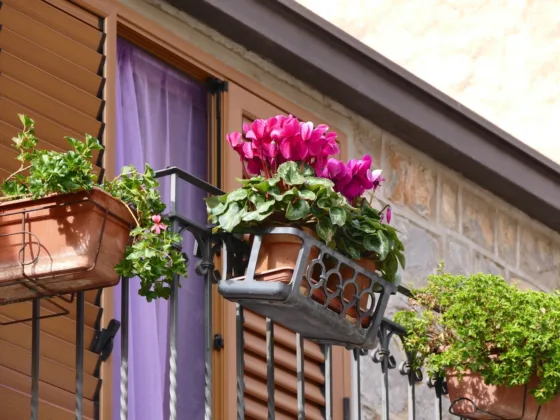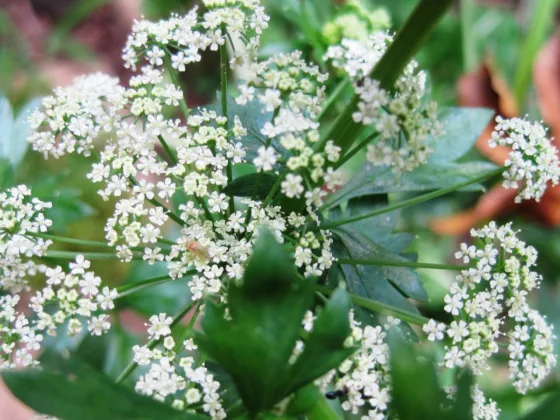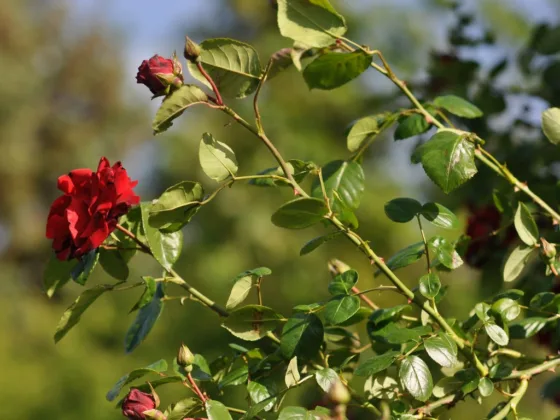Table of ContentsShow
So you’re a gardener and you have a bone to pick with your neighbor. You’ve considered applying Nair to his cat, but you don’t have the heart to be cruel to animals. You’ve thought about stepping on her tulips, but she knows the boots you wear.

As a fellow gardener who cares deeply about your personal needs and challenges, let me offer to be your “back door man” if you will.
I happen to know a few dark secrets of the gardening realm that will enable you to get your long-sought-after revenge on that neighbor by simply planting a few things in your yard, and then waiting for the revenge to exact itself “organically”, so to speak.
But seriously now, I didn’t write this article to tell you how to get even with your neighbor. No, I am writing this article a little tongue-in-cheek to give you information on some nasty plants that you need to think twice about before bringing them into your yard.
The way I see it, you’d have to pretty well be willing to sacrifice your yard first before your neighbor would even start feeling the adverse effects of these nasty plants. If you’re willing to go to such lengths for revenge, then don’t call me, I’ll call you…
So anyway, here’s a list of the top plants you’ll want to keep away from your yard and your neighbors’ too, unless you’re looking for trouble and you’re more than willing to lop off that nose of yours to spite your face.
Un-Neighborly Trees
First Place: White/Silver Poplar (Populus alba)

This is a category with several worthy contenders to the crown, but after talking to a whole group of my Northscaping friends from around the country, this one emerged as the most despised tree of all.
Let me put it this way; if your neighbor, or your neighbor’s neighbor, or even your neighbor’s neighbor’s neighbor, has a white poplar in their yard, at some point in your life you can look forward to having little white poplars springing up in your yard and your gardens.
No, it doesn’t matter that their tree is 50 or more feet away – this tree doesn’t respect property lines or distance calculations.
All poplars tend to send up shoots from their roots a good distance away from the parent tree when the roots are disturbed or as the parent tree ages and dies. But none is as brazen about it as the white poplar.
This tree doesn’t even bother waiting for a disturbance or other act of nature to justify suckering itself yards away (literally) from the parent, and in some very inappropriate places (for example, your garden, your lawn, or against your house).
As if this charming resume weren’t enough to discourage you from ever wanting one of these misfits in your neighborhood, let’s add to it the very weak branching habit and the susceptibility to cankers, which means that eventually these monsters will come crashing down on whatever happens to lie beneath; fence, house, dog, or even you…
They aren’t long-lived, and when they die, they make sure to intensify your pain by celebrating your loss with a suckering festival around your yard and the 4 or 5 yards nearest to you for the next few years. This tree is determined to leave a lasting legacy.
As a landscape designer, I can’t think of any application where this tree would be appropriate given this nasty habit it possesses. If you desire the silvery undersides of the leaves, plant a silver maple. If you like the white bark, go for a birch or aspen.
The only reason you’d ever want to plant one of these in your yard is that you have a long-standing vendetta to settle with your neighbor and you like taking your time doling out the punishment, or because you are a masochist and look forward to spending your retirement years mowing down little poplar shoots in your now-ugly lawn.
Runners Up:

Quite frankly, any of the poplars (Populus spp.) will eventually become liabilities to both you and your neighbors. They all have an unfortunate tendency to send up suckers from their roots when they are disturbed or when the parent plant dies.
At least most of the other poplars have some landscape merits and are content to wait for old age before they become a problem (kind of like what I hope to do someday!).
But let’s not end with poplars. We also have virtually any willow (Salix spp.) trees, which the experienced yard owner will know have a habit of dropping entire branches every year (it gives an interesting idea to “fall” when half of the tree falls…). Dangerous it is not, but anyone touched by its reach will come to dread the annual branch-gathering ritual.
How about a flowering crab (Malus spp.) hanging over onto your neighbor’s yard, you know, the kind that produces an abundance of large juicy crab apples that decompose to a squishy brown on contact with the ground? Or hickory and buckeye nuts which become lethal projectiles when picked up by the lawnmower?
And we can’t ever forget the Siberian elm (Ulmus pumila), which was #2 in my informal survey. Besides a propensity for disease and weak branching, this plant may be the most prolific seeder in the plant kingdom, sort of the dandelion of trees.
Its seeds will germinate in your morning cup of coffee if you give them the chance, and there are more than enough of them to go around. Now if only Siberian elm seeds were a cash crop…
Un-Neighborly Shrubs
First Place: Glossy Buckthorn (Rhamnus Cathartica)
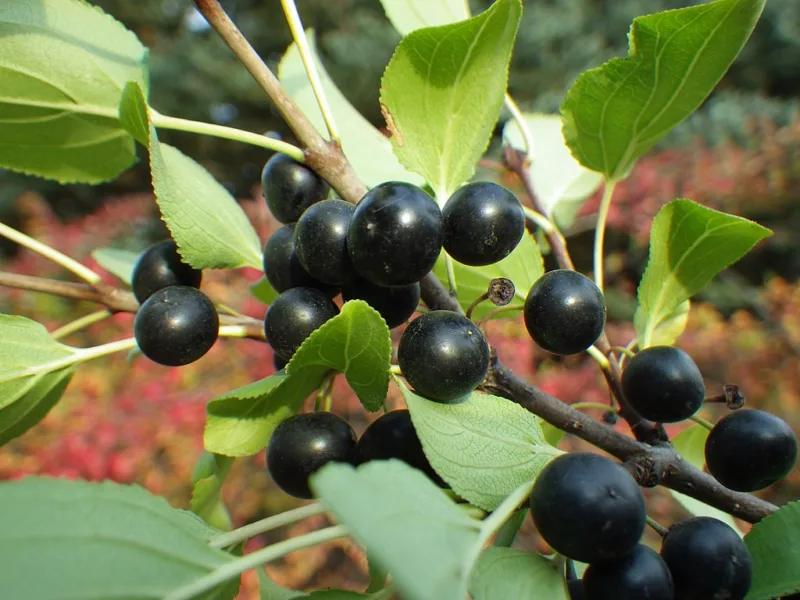
Here’s a plant that if planted in your yard, will manage to become a threat to your yard, to your neighbors’ yards, to your whole neighborhood, and your entire community. These weeds with branches are so prolific in their ability to spread via seed that they are outlawed in many communities, and I mean that literally.
The problem is that birds are fond of the small black fruits they produce in abundance and eat them liberally.
The seeds inside of the fruits are not digested and pass right through the birds (you can let your imagination take over at that point if you must know further details) everywhere and anywhere they go about doing their business. And then these gazillion seeds sprout and try to replace all of the natural vegetation in the area.
I almost feel like I’m doing your entire community a disservice by even telling you about this shrub, never mind your neighbors. These plants need to be eradicated, plain and simple, because they’ve escaped cultivation and are threatening our native ecosystems all across the North.
They aren’t welcome here, that’s for sure. So unless you hate yourself, your neighbors, and your whole community, don’t bother bringing this cretin of the plant world into your world.
Runners Up:

Some other shrubs that could strain your friendships with the neighbors? Smooth sumac (Rhus glabra) suckers and it suckers profusely from a very young age.
This shrub will fill in a large area in a few short years, and it doesn’t respect lawns, property lines, or any other human-imposed boundaries. So, if that area happens to be your garden or your lawn, or worse, your neighbor’s, you can expect to have little sumacs popping up here and there, not at your behest but at the parent plants.
Don’t get me wrong, this plant does have some wonderful ornamental attributes. It displays some of the finest fall colors of any shrub, ranging from a rich fiery red to a blend of burnt orange, yellow and scarlet, all on the same plant.
It has very tropical-looking compound foliage and a distinctive growth habit, along with colorful candle-shaped fruit in late summer and fall.
Luckily, you can use its suckering tendencies to advantage; combined with the fact that this shrub is drought-tolerant and roots solidly, it makes a great stabilizer for slopes, especially those newly created or disturbed. Or, it can be strategically planted in such a way as to contain it, for example between a concrete sidewalk and a garage.
Nothing says “You Ain’t Welcome Here” like a thick hedge of Japanese barberries (Berberis thunbergii spp.); the neighbor’s kids will try crawling through them once, and only once. Same with the Scottish rose (Rosa spinosissima), which has a unique way of saying “I love you” while driving spiny little swords into your side.
Or you can plant a hedge of raspberries (Rubus spp.) along the property line, which are sucker-like weeds and have no landscape merits at all. Unless, of course, your neighbors happen to like raspberries! How about poison ivy? Too obvious, and if you are willing to plant this in your yard to get even with the neighbors, you are already an unstable individual and I don’t want to talk to you anymore…
Un-Neighborly Perennials
First Place: Variegated Bishops Goutweed (Aegopodium podagraria)

Ok, so this one is not even a contest. Anyone who has ever had the misfortune of planting this little devil or having it resident in their yard, or worse, in a neighbor’s yard, knows what I mean. This plant is harder to eradicate than a mother-in-law who lives next door in a mortgage-free house.
What’s even worse about this plant is that it tempts the unwitting gardener with its delightful white-variegated leaves that are highly attractive right from spring to snow. And it’s easy to grow, so easy in fact that even the worst gardener in the North, whoever that might be, couldn’t help but do a fine job with this plant.
But don’t fall prey to the sweet songs of this siren. Of all the plants I’ve listed in this entire article, this baby is by far the most aggressive and invasive. It will grow anywhere and for any reason it can think of, and it will spread like a disease. It will spread through a garden, it will spread into a lawn, and it will even attempt to grow in gravel, mulch, or concrete.
And if you plant it anywhere near your neighbor’s yard, it will gladly try and overrun their property as well. It has only one objective in your yard, and that is to be the only plant in your yard.
And yet, I have seen one or two good uses of this plant, and I do stress only one or two. It is safe to put into a fully contained planter which will never allow its roots to ever touch the ground; it still hasn’t figured out a way to relocate itself from total containment (although I’m sure it’s working on it as we speak…).
Still, unless you like to flirt with disaster, this plant is best left as a picture on the internet where it can’t harm you or your yard.
Runners Up:
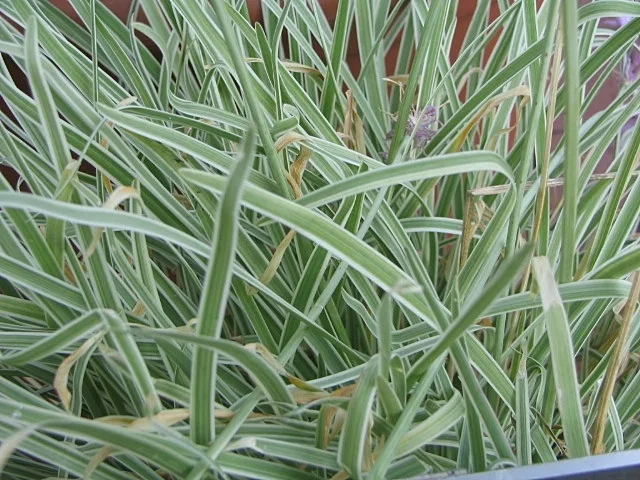
Other nasty perennials? All kinds of spreaders will gladly reach out and touch your neighbors’ gardens, whether by using runners, stolons, or seeds.
Variegated ribbon grass (Phalaris arundinacea ‘Picta’) is the ornamental grass equivalent of bishops goutweed; it looks as attractive and is about as invasive. The same containment rules apply here.
Another honorable mention goes to the chameleon plant (Houttuynia cordata), which although I’ve never grown one, is quite vigorous and very unwelcome in a garden setting.
You could also “fern” your neighbors out of their yard with the surprisingly mobile ostrich fern (Matteuccia strutheriopteris), but that might end up looking like an interesting landscape approach instead.
The list of vigorous spreaders goes on; Lamium, creeping jenny, periwinkle. Ironically, many of these vigorous perennials make great groundcovers given their tenacity and willingness to grow anywhere. As long as you can contain them, they can be useful!
Ok, so I trust you all realize that this whole article is written in a tone of jest, and that by no means am I recommending that you plant any of these anywhere near your yard unless you know exactly what you’re doing.
You’d not only run the risk of starting or intensifying a feud, but you’ll also end up bringing down your property value, and I can’t figure out why you would ever want to do that.
The lesson to learn here is that not all plants are right for your yard or garden, and some can even adversely affect your neighbor’s yards as well. Too often we overlook how our decisions will impact them because we’re so absorbed in our worlds.
Good Northscapers care about helping their neighbors, so not only will you not bring these into your yard or use them judiciously, but you’ll also inform your neighbors about these hazards and make sure they don’t make the same mistake. You’ll both be better off for it!

